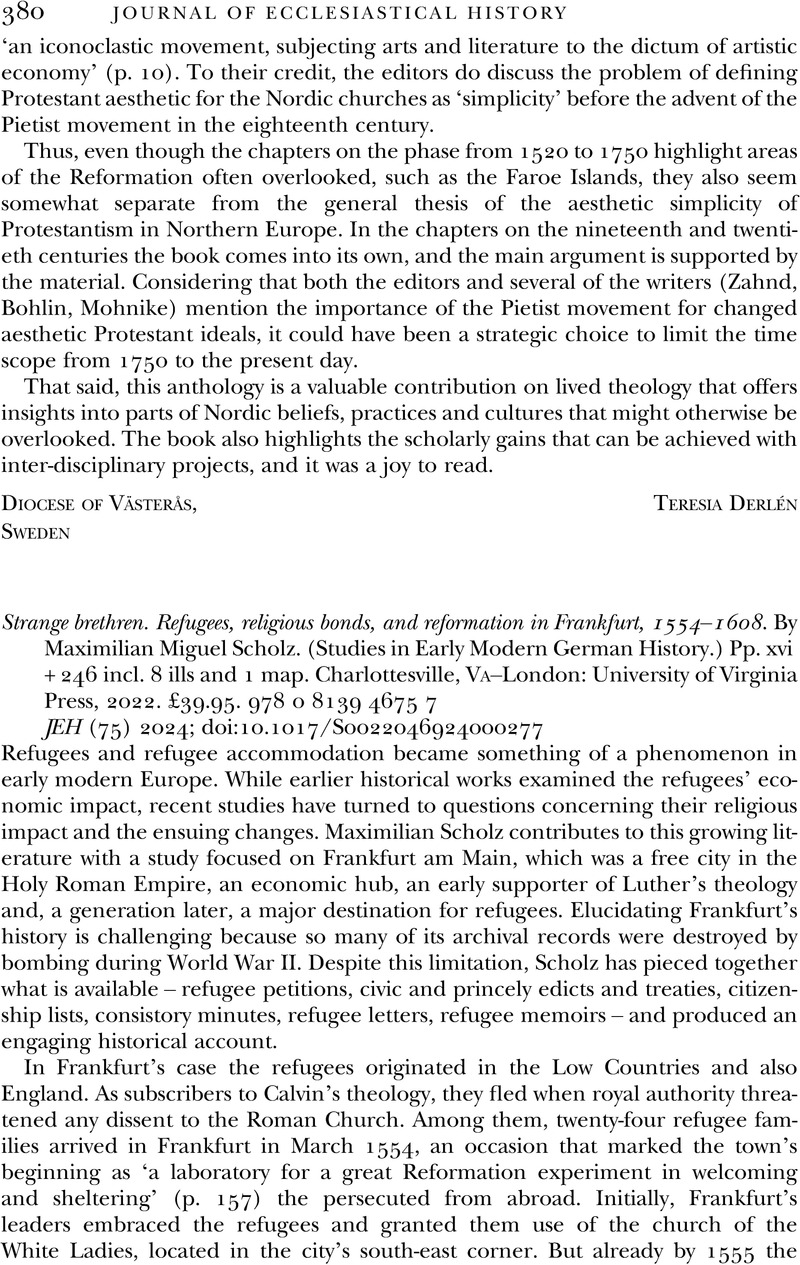No CrossRef data available.
Article contents
Strange brethren. Refugees, religious bonds, and reformation in Frankfurt, 1554–1608. By Maximilian Miguel Scholz. (Studies in Early Modern German History.) Pp. xvi + 246 incl. 8 ills and 1 map. Charlottesville, Va–London: University of Virginia Press, 2022. £39.95. 978 0 8139 4675 7
Review products
Strange brethren. Refugees, religious bonds, and reformation in Frankfurt, 1554–1608. By Maximilian Miguel Scholz. (Studies in Early Modern German History.) Pp. xvi + 246 incl. 8 ills and 1 map. Charlottesville, Va–London: University of Virginia Press, 2022. £39.95. 978 0 8139 4675 7
Published online by Cambridge University Press: 04 April 2024
Abstract
An abstract is not available for this content so a preview has been provided. Please use the Get access link above for information on how to access this content.

- Type
- Reviews
- Information
- Copyright
- Copyright © Cambridge University Press 2024



